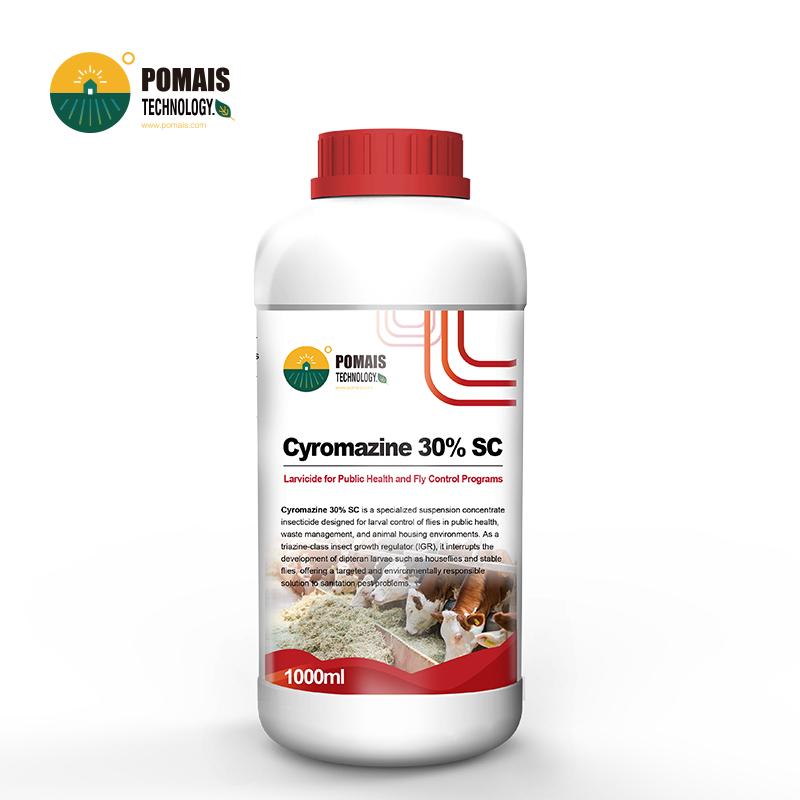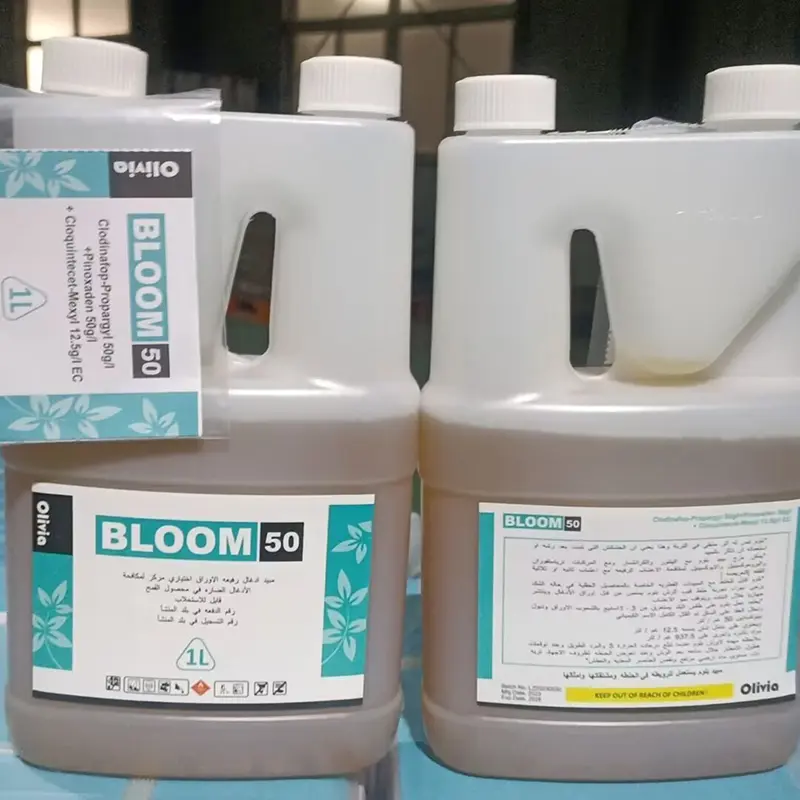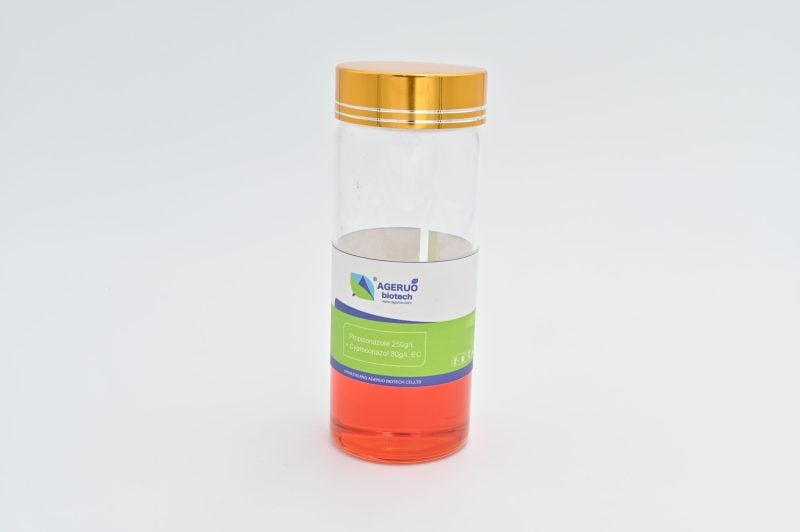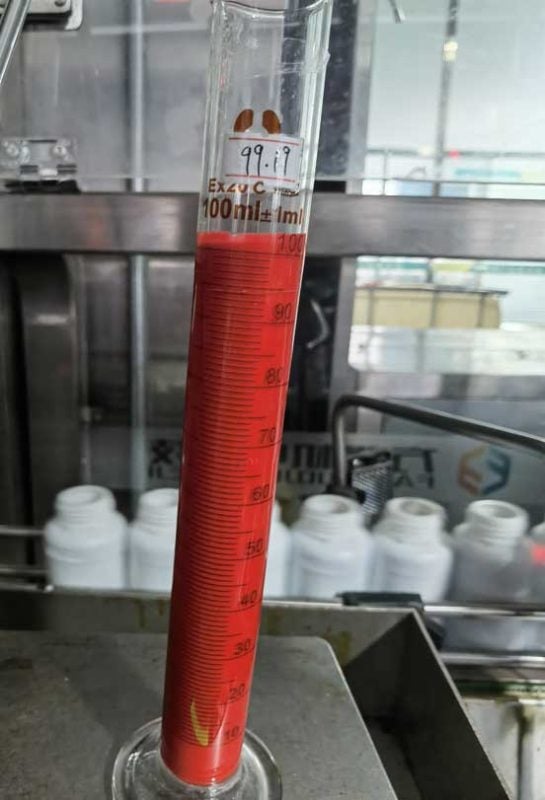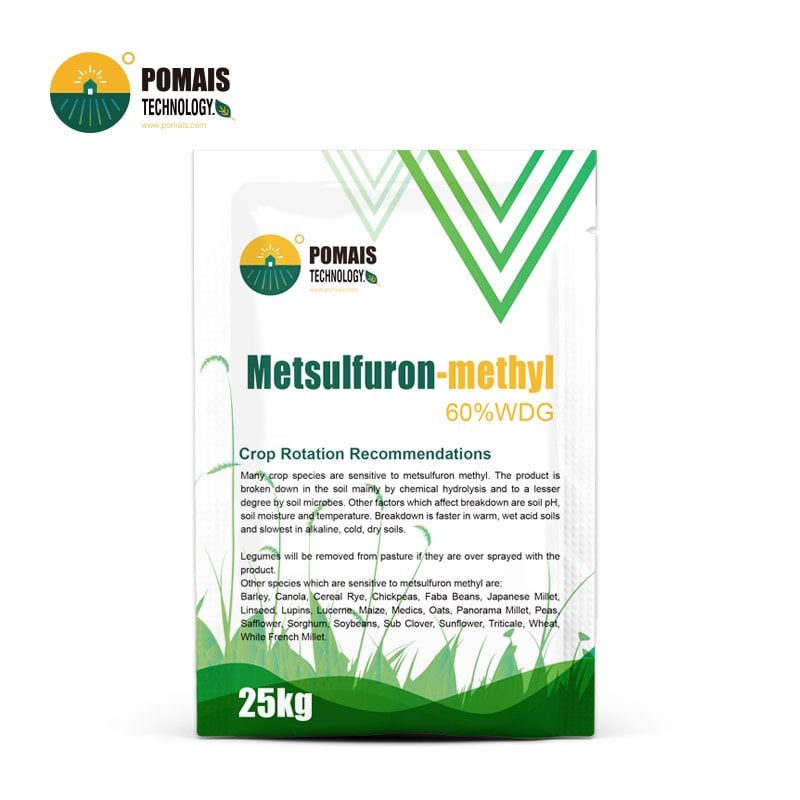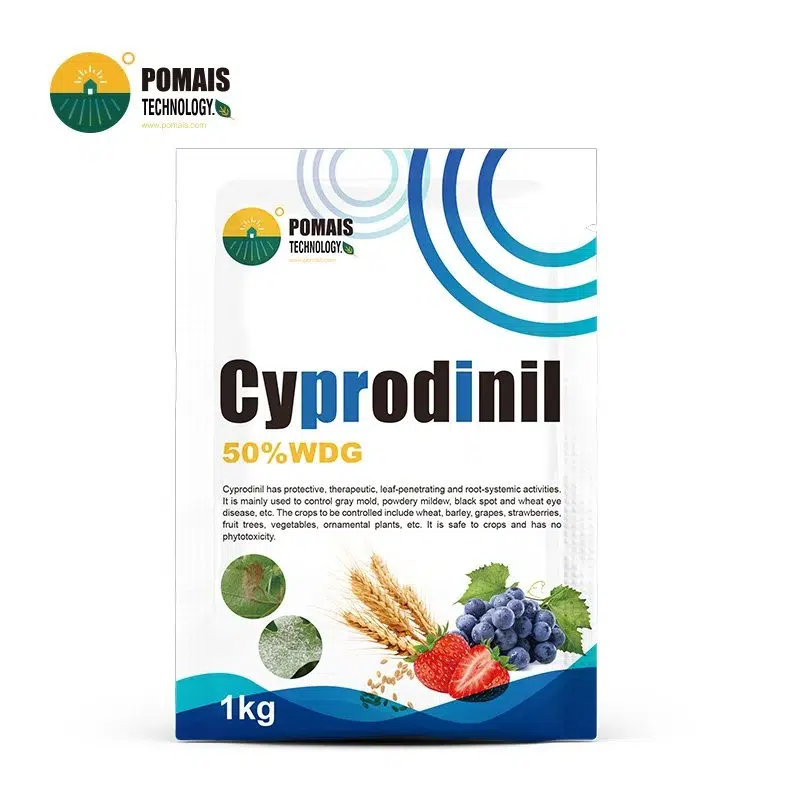Cyromazine 30% SC | Public Health Pest Control
Larvicide for Public Health and Fly Control Programs
Cyromazine 30% SC is a specialized suspension concentrate insecticide designed for larval control of flies in public health, waste management, and animal housing environments. As a triazine-class insect growth regulator (IGR), it interrupts the development of dipteran larvae such as houseflies and stable flies, offering a targeted and environmentally responsible solution to sanitation pest problems.
This product is particularly effective in urban sanitation sites, waste storage areas, poultry houses, and livestock farms, where controlling fly larvae at the source is critical for reducing adult fly populations and associated health risks. Cyromazine 30% SC is suitable for integration into public health pest management campaigns and is fully adaptable to local branding and regulatory needs via OEM and ODM services.
- Designed for Professional Buyers & Bulk Orders
- This product is available for business purchase and large-scale distribution.
- We support custom packaging, labeling, and formulation to meet your market needs.
- Let’s build your brand together.

About Cyromazine 30% SC | Public Health Pest Control
About Cyromazine 30% SC | Public Health Pest Control
| Parameter | Details |
|---|---|
| Product Name | Cyromazine 30% SC |
| Active Ingredient | Cyromazine, 300 g/L |
| Formulation Type | Suspension Concentrate (SC) |
| Chemical | Triazine insect growth regulator |
| CAS Number | 66215-27-8 |
| Molecular Formula | C6H10N6 |
| Appearance | Off-white to pale yellow liquid |
| Target Use | Fly larval control in public health and animal waste settings |
| Brand | POMAIS (OEM/ODM available) |
| Shelf Life | 2 years when stored under appropriate conditions |
Mode of Action: Disrupts Larval Molting Through Selective Growth Regulation
Cyromazine 30% SC controls fly larvae by interfering with their normal molting process, specifically targeting the hormonal pathways responsible for development from maggot to adult fly. As a triazine- insect growth regulator (IGR), it offers highly selective larvicidal activity without affecting non-target organisms, making it ideal for use in sensitive sanitation and livestock environments.
Technical Mode of Action
- Primary Mechanism: Alters the hormonal regulation of chitin deposition, preventing larvae from forming a viable pupal cuticle
- Target Stage: Larval stage of dipteran insects, including houseflies (Musca domestica), stable flies (Stomoxys calcitrans), and other filth flies
- No Effect on Adults: Does not kill adult flies; works by preventing emergence of the next generation
- Onset of Action: Affected larvae fail to complete molting and die before pupation
Key Characteristics
| Feature | Description |
|---|---|
| Mode of Application | Contact and ingestion (absorbed via larval feeding and body surface) |
| Systemicity | Non-systemic – acts only where applied |
| Selectivity | Harmless to humans, birds, fish, bees, and most beneficial insects |
| ification | IRAC Group 17 – Triazine IGR |
Cyromazine 30% SC is particularly valuable in resistance management programs, as it employs a unique biochemical pathway not shared by adulticides or neurotoxic compounds. When used as part of an integrated fly management strategy, it effectively reduces fly emergence and the need for frequent spraying of adult populations.
Application Scenarios and Target Pests: Effective Fly Larval Control in Sanitation and Waste Environments
Cyromazine 30% SC is specifically formulated to target dipteran larvae in environments where organic waste, moisture, and animal manure provide ideal breeding conditions for flies. Its high efficacy and selective action make it ideal for urban sanitation zones, poultry and livestock housing, garbage collection points, and commercial waste processing sites.
Primary Application Scenarios
| Environment | Target Pest | Function |
|---|---|---|
| Poultry farms (under cages, manure belts) | Musca domestica (housefly larvae) | Disrupts fly lifecycle at larval stage |
| Livestock barns, stables, pig houses | Stable fly and housefly larvae | Reduces emergence of adult flies |
| Municipal waste transfer stations | Filth flies and drain fly larvae | Controls population buildup in organic waste |
| Composting facilities, organic-rich soils | Midge larvae, maggots | Reduces larval density, lowers adult fly pressure |
| Sewage and drainage areas | Dipteran larvae in sludge or residuals | Prevents mosquito and fly outbreaks at source |
Other Use Extensions (when approved by label)
- Cyromazine in poultry: Applied to manure to control maggots in layer or broiler houses
- Cyromazine for sheep and goats: Used in veterinary contexts for blowfly strike prevention (via different formulations)
- Cyromazine near fish farms: Low toxicity allows selective use in aquaculture-adjacent areas with fly nuisance
By breaking the fly lifecycle at the larval stage, Cyromazine 30% SC enables long-term suppression without repeated adulticidal spraying, helping sanitation teams, pest control contractors, and animal farm operators maintain hygienic, fly-free environments.
Usage Instructions and Recommended Dosage: Practical Application for Fly Larval Management
Cyromazine 30% SC should be applied directly to areas where fly larvae develop, particularly in organic waste accumulations, moist manure, or composting material. The product works by being absorbed through the larval body or ingested during feeding, disrupting their molting process and preventing adult emergence.
Recommended Dosage and Application Frequency
| Application Site | Dosage Rate | Application Interval | Notes |
|---|---|---|---|
| Poultry manure (dry or wet) | 200–300 mL per 100 m² | Every 7–14 days | Spray evenly on manure surface or conveyor belts |
| Cattle barns, pigpens, horse stables | 200 mL per 100 m² | Every 2 weeks | Focus on corners, feeding areas, and drainage lines |
| Composting zones and waste areas | 250–350 mL per 100 m² | Weekly or biweekly | Apply during waste turnover or after material layering |
| Sewage treatment or sludge pits | 0.3–0.5 mL/m² diluted in water | Every 10–14 days | Apply to wet, larval-active zones (avoid flowing water) |
Application Method
- Dilution: Mix Cyromazine 30% SC with clean water (e.g., 200 mL in 10 L water) before spraying
- Equipment: Use backpack sprayers, low-pressure systems, or mist blowers for uniform application
- Timing: Apply during low fly activity hours (early morning or evening) to minimize disruption
- Re-treatment: Repeat based on waste accumulation rate, fly pressure, and environmental conditions
Safety and Handling Notes
- Do not apply to areas with direct human or animal food contact
- Avoid runoff into open water bodies or drainage systems unless permitted
- Shake container well before use and ensure uniform mixing in spray tank
Regular application of Cyromazine 30% SC prevents fly outbreaks at their source, reducing adult fly populations and the need for reactive spraying, while maintaining a cleaner, safer environment in sanitation and livestock facilities.
Product Advantages and Technical Highlights: Targeted, Sustainable Fly Control for Sanitation Programs
Cyromazine 30% SC combines targeted larval control, environmental safety, and formulation stability to meet the demands of modern public health and sanitation pest control programs. Its unique action on fly larvae and suitability for integrated pest management (IPM) make it a key tool for long-term fly population suppression.
Key Advantages
- Highly Selective Action
Cyromazine targets only dipteran larvae, with no adverse effects on mammals, birds, fish, or beneficial insects, making it safe for use in sensitive environments such as poultry farms, stables, and municipal waste zones. - Long-Lasting Residual Effect
A single application remains effective for up to two weeks, depending on organic load and environmental conditions, reducing labor and chemical use over time. - Resistance Management Tool
As an IRAC Group 17 IGR, Cyromazine does not share cross-resistance with pyrethroids or organophosphates, making it ideal for rotation programs and areas with known insecticide resistance. - Non-Systemic and Non-Neurotoxic
Unlike conventional neurotoxic adulticides, Cyromazine offers a safer alternative for long-term vector control with no hazard to operators or bystanders when used as directed. - Adaptability to Diverse Sanitation Scenarios
Whether applied in livestock housing, composting facilities, or sewage environments, Cyromazine 30% SC maintains its larvicidal effect in a wide range of moisture and waste conditions. - OEM/ODM Friendly Formulation
The SC formulation is ideal for custom branding, private label packaging, and fast adaptation to regional regulatory needs, giving distributors flexibility in market positioning.
Cyromazine 30% SC empowers sanitation teams, pest control professionals, and OEM partners to deploy an efficient, low-risk, and scientifically proven larval control strategy, without compromising on safety, effectiveness, or regulatory compliance.
OEM/ODM and Packaging Services: Scalable Solutions for Global Fly Control Partnerships
At POMAIS, we specialize in providing full OEM and ODM services for Cyromazine 30% SC, enabling you to launch or expand your own brand of larvicide products in public health and sanitation markets. Whether you’re bidding on municipal fly control tenders, supplying pest control companies, or building a national brand, our infrastructure supports your growth.
Customization Capabilities
- Label and Packaging Customization: Multilingual artwork, local compliance icons, logo placement, and layout design tailored to your brand
- Regulatory Document Support: COA, SDS, MSDS, TDS, and full registration dossiers (where applicable)
- Anti-Counterfeit Solutions: Barcode, QR code, holographic seals, and serialized batch numbers
Available Packaging Options
| Container Type | Volume Options |
|---|---|
| HDPE Bottles | 100 mL, 250 mL, 500 mL, 1 L |
| Industrial Jerry Cans | 5 L, 10 L, 20 L |
| Bulk Supply | 200 L drums, 1000 L IBC tanks |
| Label Languages | English, Arabic, French, Spanish, Russian, etc. |
Logistics & Export Advantages
- Flexible MOQs: Support for both trial orders and large-scale supply programs
- Global Fulfillment Network: Efficient export channels to Africa, Latin America, the Middle East, and Southeast Asia
- On-Time Delivery: 99% on-time fulfillment rate, supported by reliable shipping partners and quality control systems
Partnering with POMAIS gives you access to a dependable supply chain, customizable product design, and full technical support—ensuring you remain competitive and compliant in any market you serve.
Safety and Environmental Information: Low-Toxicity, Environmentally Compatible Fly Larvicide
Cyromazine 30% SC is recognized for its excellent safety profile and targeted action, making it a preferred choice in environments where human, animal, and environmental safety are a priority. Its selective mechanism allows for effective pest control without widespread ecological disruption.
Toxicity ification
| Subject | Toxicity Level | Notes |
|---|---|---|
| Humans | Low (Oral LD50 > 3,000 mg/kg in rats) | No neurotoxicity, non-carcinogenic, non-irritating |
| Livestock & Poultry | Safe when applied to manure surfaces | Avoid direct exposure to concentrate |
| Aquatic Life | Low toxicity to fish, amphibians, and aquatic insects | Avoid direct application to water bodies |
| Bees and Pollinators | Not harmful | Safe for pollinator habitats |
| Birds | Practically non-toxic | No accumulation or reproductive effects observed |
Environmental Features
- Biodegradability: Degrades naturally in manure and soil within days to weeks
- No Bioaccumulation: Does not concentrate in animal tissues or enter the food chain
- Minimal Drift or Volatility: Non-systemic, stays localized at the site of application
- IPM-Compatible: Ideal for use in Integrated Pest Management programs due to minimal environmental load
Operator Safety Recommendations
- Wear gloves, goggles, and long-sleeved clothing during mixing and spraying
- Do not inhale spray mist or allow product to contact skin or eyes
- After use, wash hands and exposed skin thoroughly
- Keep product away from food, animal feed, and water sources during handling
When applied correctly, Cyromazine 30% SC delivers effective larval control while maintaining high safety standards for humans, animals, and the surrounding environment.
Storage and Transportation: Safe Handling and Long-Term Product Stability
Cyromazine 30% SC is formulated for stability and safe handling under standard pesticide storage and transport conditions, allowing for reliable inventory management and compliance across domestic and international supply chains.
Storage Recommendations
- Ideal Storage Conditions: Store in a cool, dry, and well-ventilated area, away from direct sunlight
- Temperature Range: Optimal between 5°C and 30°C (41°F – 86°F)
- Humidity Sensitivity: Keep containers tightly sealed to avoid moisture ingress
- Shelf Life: 24 months from the date of manufacture when stored in original packaging
- Segregation: Do not store near food, beverages, animal feed, or flammable materials
Transportation Guidelines
| Requirement | Specification |
|---|---|
| UN ification | Not ified as hazardous under normal transport volumes |
| Packing Group | Not assigned (non-corrosive, non-flammable) |
| Packaging Materials | High-density polyethylene (HDPE) bottles or jerry cans with tamper-evident seals |
| Labeling Compliance | Must include batch number, production/expiry date, safety pictograms, and handling instructions |
| Transport Regulations | Complies with FAO, GHS, and destination-specific pesticide transit laws (e.g., ADR, IMDG if needed) |
Handling Notes
- Use care during loading and unloading to prevent container breakage
- Do not expose to extreme heat or freezing temperatures in transit
- In case of leakage, isolate and contain with absorbent material; dispose of according to local hazardous waste regulations
Proper storage and transportation ensure Cyromazine 30% SC remains effective, safe, and fully compliant with global pest control product standards, from manufacturer to field application.
Frequently Asked Questions (FAQ)
Q1: Is Cyromazine 30% SC safe for use in animal facilities?
Yes, Cyromazine 30% SC is designed for use in poultry houses, cattle barns, and pig farms. It is applied to manure or bedding—not directly on animals—and is safe for livestock when used as directed.
Q2: Can it be used around fish or near aquaculture zones?
Yes, with precautions. Cyromazine has low toxicity to fish, but direct application into open water or fishponds should be avoided. It can be safely used near aquaculture areas as long as runoff is controlled.
Q3: How long does it take to control fly larvae after application?
Typically, larval mortality begins within 24 to 48 hours, with complete disruption of development occurring before pupation. The visible reduction in adult fly populations follows within 5–7 days.
Q4: Will Cyromazine 30% SC kill adult flies?
No. Cyromazine only targets larvae. For full fly control, it should be integrated with adulticides (e.g., pyrethroids) and sanitation efforts to prevent re-infestation.
Q5: Can it be mixed with other insecticides or disinfectants?
Cyromazine is compatible with many common larvicides and sanitation chemicals, but a compatibility test is recommended before tank-mixing. Do not mix with strongly acidic or alkaline products.
Q6: Does it pose a resistance risk with frequent use?
Resistance development is low with Cyromazine due to its unique IGR mode of action. However, it is best used as part of a rotational or integrated pest management (IPM) strategy to avoid long-term resistance buildup.
Partner with POMAIS: Your Reliable Manufacturer for Cyromazine-Based Fly Control Solutions
As a professional manufacturer of public health insecticides, POMAIS offers Cyromazine 30% SC with full OEM/ODM support, enabling distributors, government agencies, and pest control contractors to deliver effective, branded fly control solutions to their target markets.
With over a decade of formulation experience and export success, we support you with stable supply, technical expertise, and regulatory readiness across a wide range of countries and use scenarios.
Why Choose POMAIS?
- OEM/ODM Flexibility: Support for private label design, multilingual packaging, and brand customization
- Global Export Capacity: Fast, compliant delivery to Africa, the Middle East, South America, Southeast Asia, and Eastern Europe
- Comprehensive Documentation: COA, SDS, MSDS, TDS, and full regulatory file assistance for market registration
- Integrated Support: Technical training, sample provision, and guidance on IPM-based fly control strategy
- Reliable Production: ISO-certified facilities and strict QC protocols ensure every batch meets international standards
Contact Us Today
Whether you are:
- Launching your own pest control brand
- Participating in a government sanitation program
- Expanding your public health product line
We’re ready to support your next project.
| Parameter | Details |
|---|---|
| Product Name | Cyromazine 30% SC |
| Active Ingredient | Cyromazine, 300 g/L |
| Formulation Type | Suspension Concentrate (SC) |
| Chemical | Triazine insect growth regulator |
| CAS Number | 66215-27-8 |
| Molecular Formula | C6H10N6 |
| Appearance | Off-white to pale yellow liquid |
| Target Use | Fly larval control in public health and animal waste settings |
| Brand | POMAIS (OEM/ODM available) |
| Shelf Life | 2 years when stored under appropriate conditions |
Mode of Action: Disrupts Larval Molting Through Selective Growth Regulation
Cyromazine 30% SC controls fly larvae by interfering with their normal molting process, specifically targeting the hormonal pathways responsible for development from maggot to adult fly. As a triazine- insect growth regulator (IGR), it offers highly selective larvicidal activity without affecting non-target organisms, making it ideal for use in sensitive sanitation and livestock environments.
Technical Mode of Action
- Primary Mechanism: Alters the hormonal regulation of chitin deposition, preventing larvae from forming a viable pupal cuticle
- Target Stage: Larval stage of dipteran insects, including houseflies (Musca domestica), stable flies (Stomoxys calcitrans), and other filth flies
- No Effect on Adults: Does not kill adult flies; works by preventing emergence of the next generation
- Onset of Action: Affected larvae fail to complete molting and die before pupation
Key Characteristics
| Feature | Description |
|---|---|
| Mode of Application | Contact and ingestion (absorbed via larval feeding and body surface) |
| Systemicity | Non-systemic – acts only where applied |
| Selectivity | Harmless to humans, birds, fish, bees, and most beneficial insects |
| ification | IRAC Group 17 – Triazine IGR |
Cyromazine 30% SC is particularly valuable in resistance management programs, as it employs a unique biochemical pathway not shared by adulticides or neurotoxic compounds. When used as part of an integrated fly management strategy, it effectively reduces fly emergence and the need for frequent spraying of adult populations.
Application Scenarios and Target Pests: Effective Fly Larval Control in Sanitation and Waste Environments
Cyromazine 30% SC is specifically formulated to target dipteran larvae in environments where organic waste, moisture, and animal manure provide ideal breeding conditions for flies. Its high efficacy and selective action make it ideal for urban sanitation zones, poultry and livestock housing, garbage collection points, and commercial waste processing sites.
Primary Application Scenarios
| Environment | Target Pest | Function |
|---|---|---|
| Poultry farms (under cages, manure belts) | Musca domestica (housefly larvae) | Disrupts fly lifecycle at larval stage |
| Livestock barns, stables, pig houses | Stable fly and housefly larvae | Reduces emergence of adult flies |
| Municipal waste transfer stations | Filth flies and drain fly larvae | Controls population buildup in organic waste |
| Composting facilities, organic-rich soils | Midge larvae, maggots | Reduces larval density, lowers adult fly pressure |
| Sewage and drainage areas | Dipteran larvae in sludge or residuals | Prevents mosquito and fly outbreaks at source |
Other Use Extensions (when approved by label)
- Cyromazine in poultry: Applied to manure to control maggots in layer or broiler houses
- Cyromazine for sheep and goats: Used in veterinary contexts for blowfly strike prevention (via different formulations)
- Cyromazine near fish farms: Low toxicity allows selective use in aquaculture-adjacent areas with fly nuisance
By breaking the fly lifecycle at the larval stage, Cyromazine 30% SC enables long-term suppression without repeated adulticidal spraying, helping sanitation teams, pest control contractors, and animal farm operators maintain hygienic, fly-free environments.
Usage Instructions and Recommended Dosage: Practical Application for Fly Larval Management
Cyromazine 30% SC should be applied directly to areas where fly larvae develop, particularly in organic waste accumulations, moist manure, or composting material. The product works by being absorbed through the larval body or ingested during feeding, disrupting their molting process and preventing adult emergence.
Recommended Dosage and Application Frequency
| Application Site | Dosage Rate | Application Interval | Notes |
|---|---|---|---|
| Poultry manure (dry or wet) | 200–300 mL per 100 m² | Every 7–14 days | Spray evenly on manure surface or conveyor belts |
| Cattle barns, pigpens, horse stables | 200 mL per 100 m² | Every 2 weeks | Focus on corners, feeding areas, and drainage lines |
| Composting zones and waste areas | 250–350 mL per 100 m² | Weekly or biweekly | Apply during waste turnover or after material layering |
| Sewage treatment or sludge pits | 0.3–0.5 mL/m² diluted in water | Every 10–14 days | Apply to wet, larval-active zones (avoid flowing water) |
Application Method
- Dilution: Mix Cyromazine 30% SC with clean water (e.g., 200 mL in 10 L water) before spraying
- Equipment: Use backpack sprayers, low-pressure systems, or mist blowers for uniform application
- Timing: Apply during low fly activity hours (early morning or evening) to minimize disruption
- Re-treatment: Repeat based on waste accumulation rate, fly pressure, and environmental conditions
Safety and Handling Notes
- Do not apply to areas with direct human or animal food contact
- Avoid runoff into open water bodies or drainage systems unless permitted
- Shake container well before use and ensure uniform mixing in spray tank
Regular application of Cyromazine 30% SC prevents fly outbreaks at their source, reducing adult fly populations and the need for reactive spraying, while maintaining a cleaner, safer environment in sanitation and livestock facilities.
Product Advantages and Technical Highlights: Targeted, Sustainable Fly Control for Sanitation Programs
Cyromazine 30% SC combines targeted larval control, environmental safety, and formulation stability to meet the demands of modern public health and sanitation pest control programs. Its unique action on fly larvae and suitability for integrated pest management (IPM) make it a key tool for long-term fly population suppression.
Key Advantages
- Highly Selective Action
Cyromazine targets only dipteran larvae, with no adverse effects on mammals, birds, fish, or beneficial insects, making it safe for use in sensitive environments such as poultry farms, stables, and municipal waste zones. - Long-Lasting Residual Effect
A single application remains effective for up to two weeks, depending on organic load and environmental conditions, reducing labor and chemical use over time. - Resistance Management Tool
As an IRAC Group 17 IGR, Cyromazine does not share cross-resistance with pyrethroids or organophosphates, making it ideal for rotation programs and areas with known insecticide resistance. - Non-Systemic and Non-Neurotoxic
Unlike conventional neurotoxic adulticides, Cyromazine offers a safer alternative for long-term vector control with no hazard to operators or bystanders when used as directed. - Adaptability to Diverse Sanitation Scenarios
Whether applied in livestock housing, composting facilities, or sewage environments, Cyromazine 30% SC maintains its larvicidal effect in a wide range of moisture and waste conditions. - OEM/ODM Friendly Formulation
The SC formulation is ideal for custom branding, private label packaging, and fast adaptation to regional regulatory needs, giving distributors flexibility in market positioning.
Cyromazine 30% SC empowers sanitation teams, pest control professionals, and OEM partners to deploy an efficient, low-risk, and scientifically proven larval control strategy, without compromising on safety, effectiveness, or regulatory compliance.
OEM/ODM and Packaging Services: Scalable Solutions for Global Fly Control Partnerships
At POMAIS, we specialize in providing full OEM and ODM services for Cyromazine 30% SC, enabling you to launch or expand your own brand of larvicide products in public health and sanitation markets. Whether you’re bidding on municipal fly control tenders, supplying pest control companies, or building a national brand, our infrastructure supports your growth.
Customization Capabilities
- Label and Packaging Customization: Multilingual artwork, local compliance icons, logo placement, and layout design tailored to your brand
- Regulatory Document Support: COA, SDS, MSDS, TDS, and full registration dossiers (where applicable)
- Anti-Counterfeit Solutions: Barcode, QR code, holographic seals, and serialized batch numbers
Available Packaging Options
| Container Type | Volume Options |
|---|---|
| HDPE Bottles | 100 mL, 250 mL, 500 mL, 1 L |
| Industrial Jerry Cans | 5 L, 10 L, 20 L |
| Bulk Supply | 200 L drums, 1000 L IBC tanks |
| Label Languages | English, Arabic, French, Spanish, Russian, etc. |
Logistics & Export Advantages
- Flexible MOQs: Support for both trial orders and large-scale supply programs
- Global Fulfillment Network: Efficient export channels to Africa, Latin America, the Middle East, and Southeast Asia
- On-Time Delivery: 99% on-time fulfillment rate, supported by reliable shipping partners and quality control systems
Partnering with POMAIS gives you access to a dependable supply chain, customizable product design, and full technical support—ensuring you remain competitive and compliant in any market you serve.
Safety and Environmental Information: Low-Toxicity, Environmentally Compatible Fly Larvicide
Cyromazine 30% SC is recognized for its excellent safety profile and targeted action, making it a preferred choice in environments where human, animal, and environmental safety are a priority. Its selective mechanism allows for effective pest control without widespread ecological disruption.
Toxicity ification
| Subject | Toxicity Level | Notes |
|---|---|---|
| Humans | Low (Oral LD50 > 3,000 mg/kg in rats) | No neurotoxicity, non-carcinogenic, non-irritating |
| Livestock & Poultry | Safe when applied to manure surfaces | Avoid direct exposure to concentrate |
| Aquatic Life | Low toxicity to fish, amphibians, and aquatic insects | Avoid direct application to water bodies |
| Bees and Pollinators | Not harmful | Safe for pollinator habitats |
| Birds | Practically non-toxic | No accumulation or reproductive effects observed |
Environmental Features
- Biodegradability: Degrades naturally in manure and soil within days to weeks
- No Bioaccumulation: Does not concentrate in animal tissues or enter the food chain
- Minimal Drift or Volatility: Non-systemic, stays localized at the site of application
- IPM-Compatible: Ideal for use in Integrated Pest Management programs due to minimal environmental load
Operator Safety Recommendations
- Wear gloves, goggles, and long-sleeved clothing during mixing and spraying
- Do not inhale spray mist or allow product to contact skin or eyes
- After use, wash hands and exposed skin thoroughly
- Keep product away from food, animal feed, and water sources during handling
When applied correctly, Cyromazine 30% SC delivers effective larval control while maintaining high safety standards for humans, animals, and the surrounding environment.
Storage and Transportation: Safe Handling and Long-Term Product Stability
Cyromazine 30% SC is formulated for stability and safe handling under standard pesticide storage and transport conditions, allowing for reliable inventory management and compliance across domestic and international supply chains.
Storage Recommendations
- Ideal Storage Conditions: Store in a cool, dry, and well-ventilated area, away from direct sunlight
- Temperature Range: Optimal between 5°C and 30°C (41°F – 86°F)
- Humidity Sensitivity: Keep containers tightly sealed to avoid moisture ingress
- Shelf Life: 24 months from the date of manufacture when stored in original packaging
- Segregation: Do not store near food, beverages, animal feed, or flammable materials
Transportation Guidelines
| Requirement | Specification |
|---|---|
| UN ification | Not ified as hazardous under normal transport volumes |
| Packing Group | Not assigned (non-corrosive, non-flammable) |
| Packaging Materials | High-density polyethylene (HDPE) bottles or jerry cans with tamper-evident seals |
| Labeling Compliance | Must include batch number, production/expiry date, safety pictograms, and handling instructions |
| Transport Regulations | Complies with FAO, GHS, and destination-specific pesticide transit laws (e.g., ADR, IMDG if needed) |
Handling Notes
- Use care during loading and unloading to prevent container breakage
- Do not expose to extreme heat or freezing temperatures in transit
- In case of leakage, isolate and contain with absorbent material; dispose of according to local hazardous waste regulations
Proper storage and transportation ensure Cyromazine 30% SC remains effective, safe, and fully compliant with global pest control product standards, from manufacturer to field application.
Frequently Asked Questions (FAQ)
Q1: Is Cyromazine 30% SC safe for use in animal facilities?
Yes, Cyromazine 30% SC is designed for use in poultry houses, cattle barns, and pig farms. It is applied to manure or bedding—not directly on animals—and is safe for livestock when used as directed.
Q2: Can it be used around fish or near aquaculture zones?
Yes, with precautions. Cyromazine has low toxicity to fish, but direct application into open water or fishponds should be avoided. It can be safely used near aquaculture areas as long as runoff is controlled.
Q3: How long does it take to control fly larvae after application?
Typically, larval mortality begins within 24 to 48 hours, with complete disruption of development occurring before pupation. The visible reduction in adult fly populations follows within 5–7 days.
Q4: Will Cyromazine 30% SC kill adult flies?
No. Cyromazine only targets larvae. For full fly control, it should be integrated with adulticides (e.g., pyrethroids) and sanitation efforts to prevent re-infestation.
Q5: Can it be mixed with other insecticides or disinfectants?
Cyromazine is compatible with many common larvicides and sanitation chemicals, but a compatibility test is recommended before tank-mixing. Do not mix with strongly acidic or alkaline products.
Q6: Does it pose a resistance risk with frequent use?
Resistance development is low with Cyromazine due to its unique IGR mode of action. However, it is best used as part of a rotational or integrated pest management (IPM) strategy to avoid long-term resistance buildup.
Partner with POMAIS: Your Reliable Manufacturer for Cyromazine-Based Fly Control Solutions
As a professional manufacturer of public health insecticides, POMAIS offers Cyromazine 30% SC with full OEM/ODM support, enabling distributors, government agencies, and pest control contractors to deliver effective, branded fly control solutions to their target markets.
With over a decade of formulation experience and export success, we support you with stable supply, technical expertise, and regulatory readiness across a wide range of countries and use scenarios.
Why Choose POMAIS?
- OEM/ODM Flexibility: Support for private label design, multilingual packaging, and brand customization
- Global Export Capacity: Fast, compliant delivery to Africa, the Middle East, South America, Southeast Asia, and Eastern Europe
- Comprehensive Documentation: COA, SDS, MSDS, TDS, and full regulatory file assistance for market registration
- Integrated Support: Technical training, sample provision, and guidance on IPM-based fly control strategy
- Reliable Production: ISO-certified facilities and strict QC protocols ensure every batch meets international standards
Contact Us Today
Whether you are:
- Launching your own pest control brand
- Participating in a government sanitation program
- Expanding your public health product line
We’re ready to support your next project.
Related Products
Latest News

